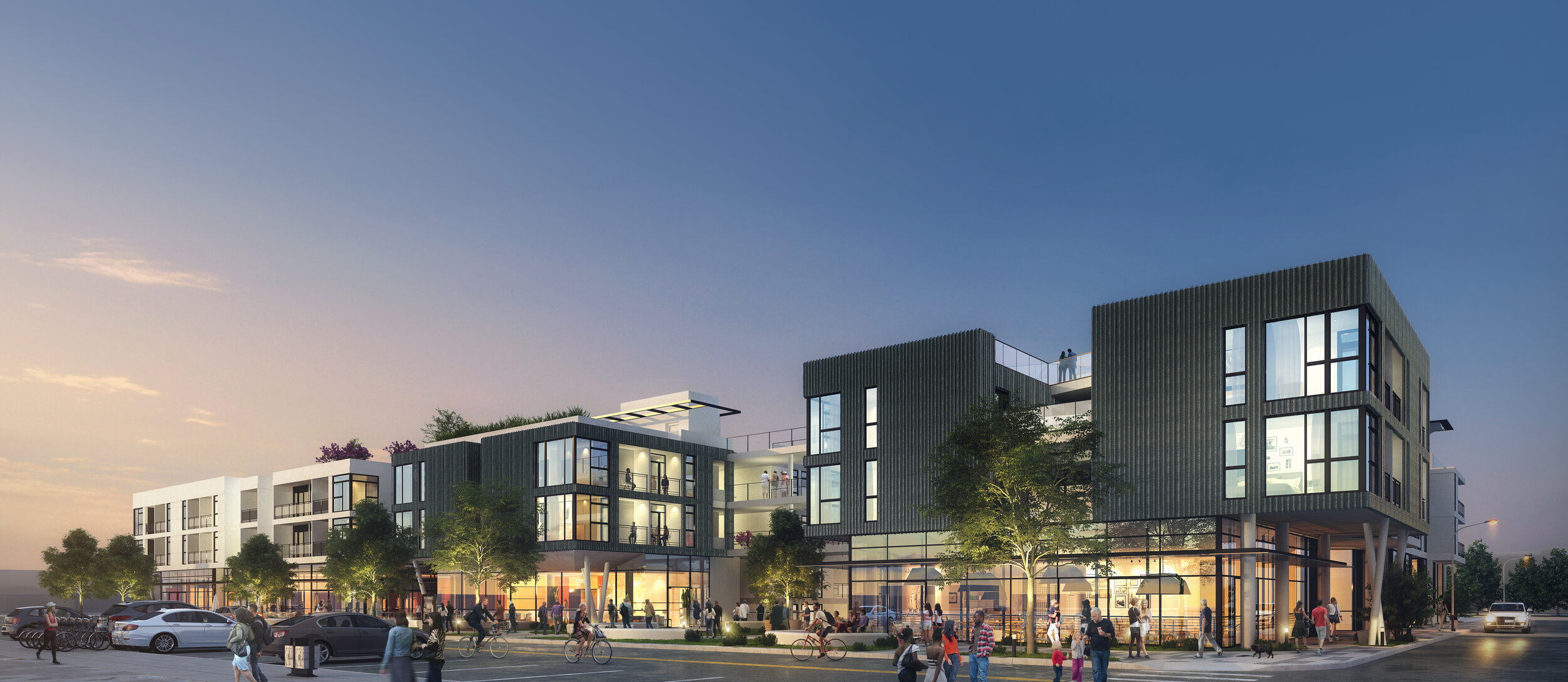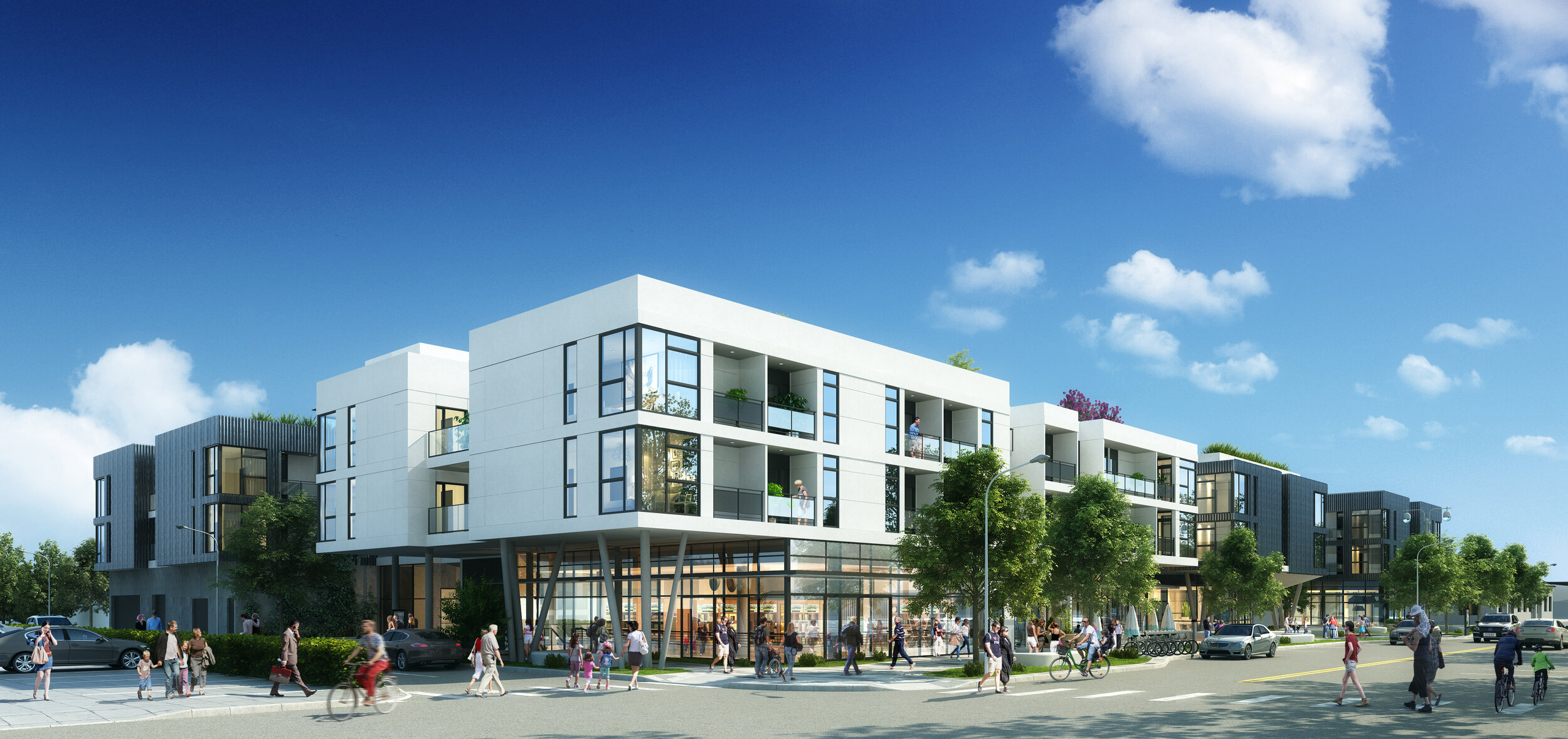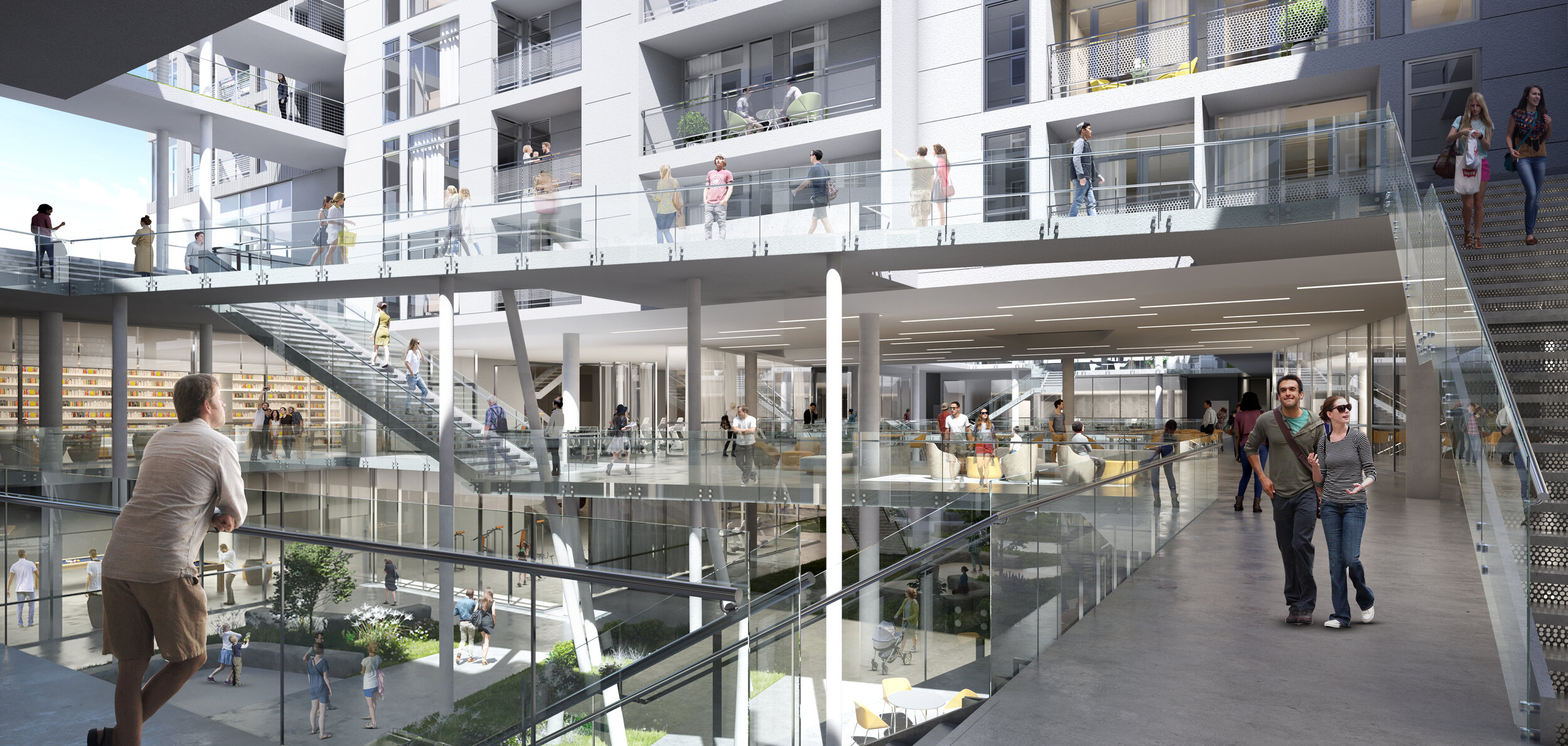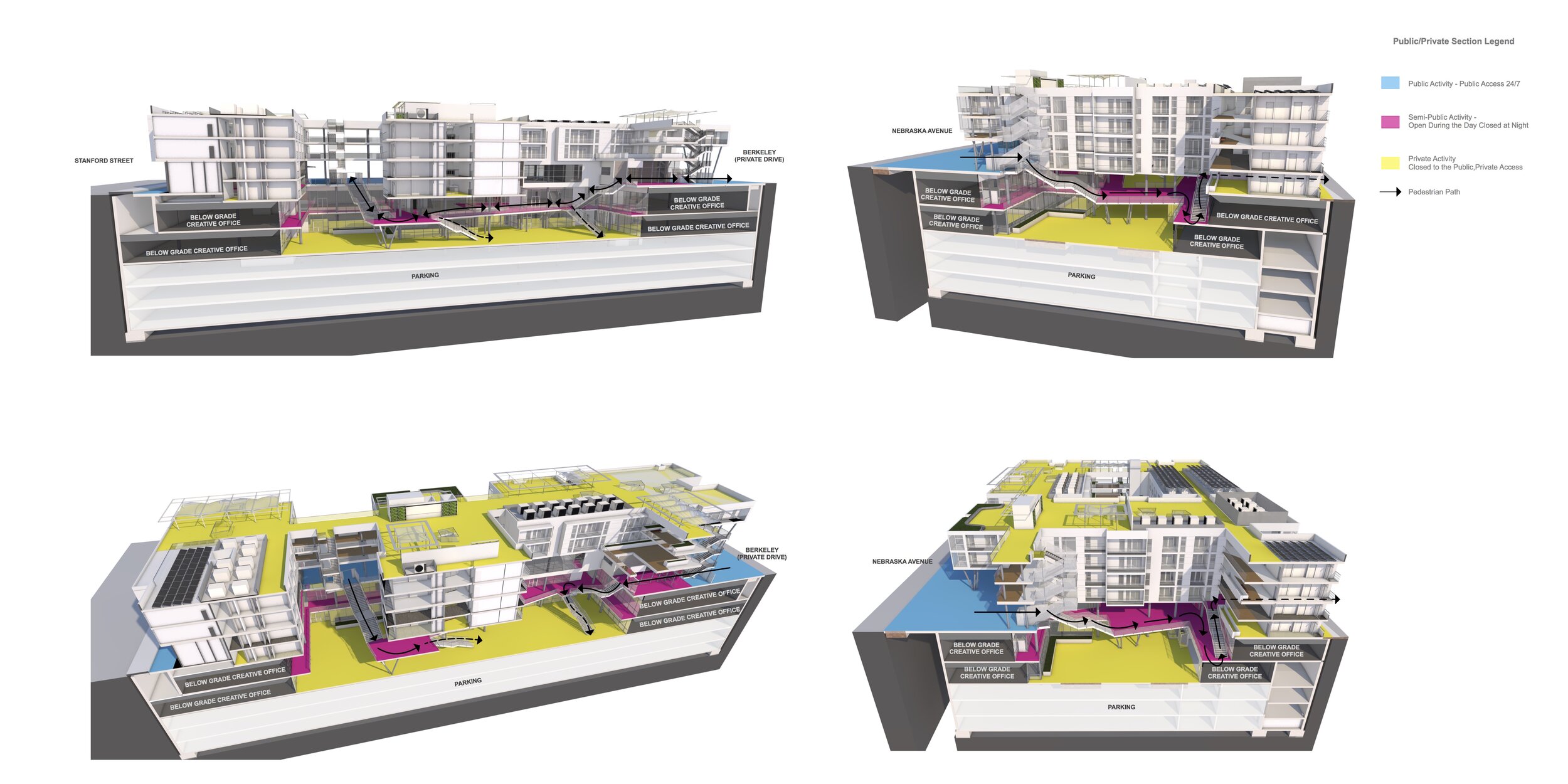3030 Nebraska
What was previously an industrial park will be a three- and four-story mixed-use community within the Bergamot neighborhood. The challenge is to design a building that:
Creates a new vibrant community of living units and acknowledges the existing variety of uses
Creates a sustainable community by taking advantage of natural ventilation and light from each unit.
Creates an energetic mix of living, working and commercial uses.
Creates a welcoming pedestrian environment with commercial serving uses the neighborhood.
Creates a high level of community and tenant interaction on grade, below grade and above grade.
For the new mixed-use residential project, we faced many site-oriented challenges. Our goals were to provide an extensive pedestrian friendly urban experience, connect apartment dwellers and the surrounding neighborhood community to a welcoming ground floor neighborhood serving commercial spaces.
The design integrates passive solar design principles and incorporates sustainable strategies by a building fenestration that responds to its solar orientation. The design explored the shifting of housing floors to increase natural light and ventilation, and open space to promote tenant interaction and a sense of community. This includes the unique neighborhood welcoming public spaces and situated to engage the below grade creative office spaces.
The design conceptually looks to create a modulation and rhythm that reflects a contemporary life style. This is done in part by breaking up the massing into well-proportioned building components and articulates the roof top residential amenity spaces. Strategic punctures in the façade create outdoor passive recreational opportunities for tenants.
It was clear in the early stage of the project we needed to develop a design that had a permeable street façade, breaking down the scale by modulating the building massing and fostering a welcoming presence to tenants, neighbors and guests.
The residential floor plates break down the monolithic appearance of a typical apartment design and help shape the street façade massing into three separate building forms that vary in height and reflect the openness of the building to the community.
The project, which is slated for LEED Platinum certification, includes a sun-shading system for energy efficiency and a roof with photovoltaic cells that will provide all necessary energy for public spaces.







